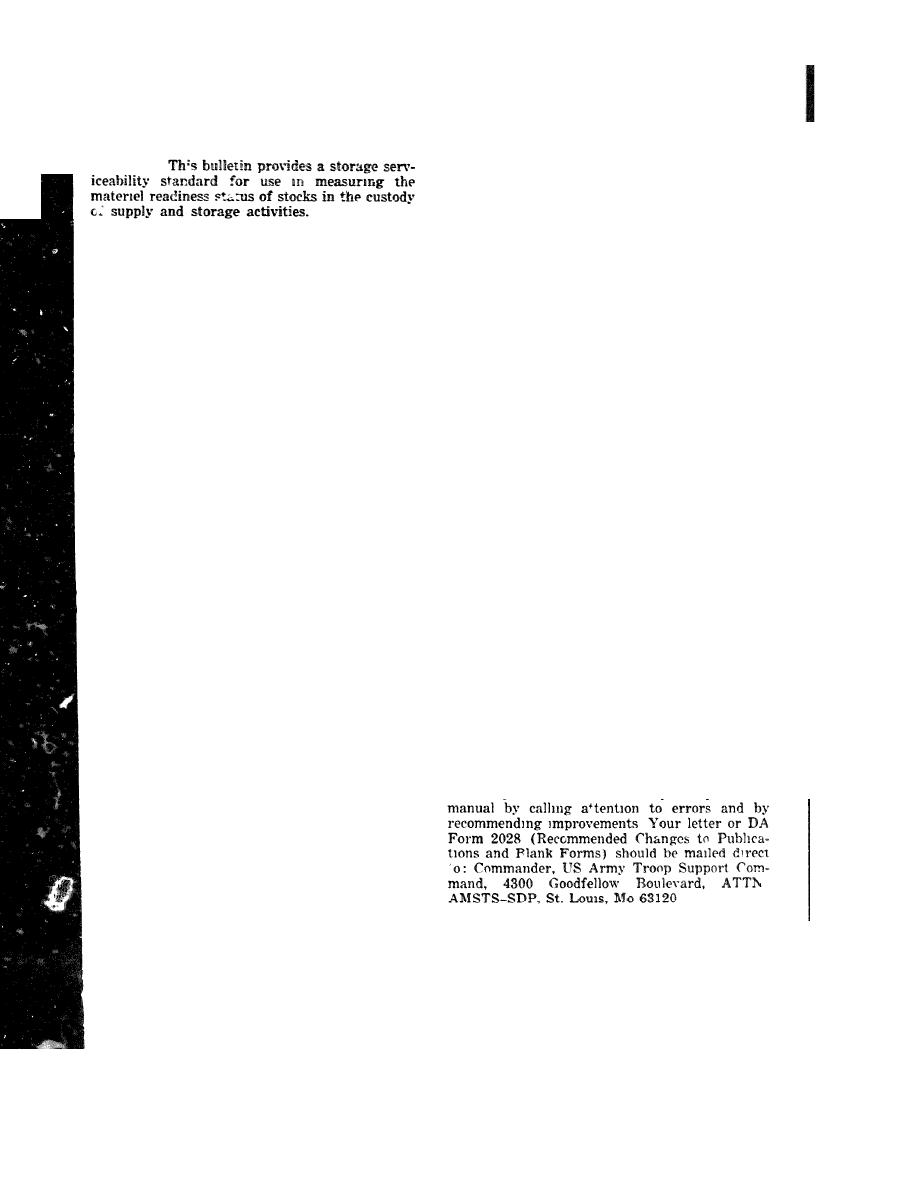
INTRODUCTION
1. Purpose.
tions. A critical defective is a unit of product that
contains one or more critical defects.
(b) Major. A major defect is a defect,
other than critical, that could result in failure, or
materially reduce the usability of the unit of
product for its intended purpose, or seriously
the Army CONUS and oversea depots engaged in
affect the appearance when appearance is a major
the receipt, storage, and issue of TROSCOM
characteristic of the item.
materiel.
A major defective is a unit of product that con-
tains one or more major defects.
(c) Minor. A minor defect is one that does
specialized terms used herein can be found in
not materially reduce the usability of the unit of
MIL-STD-109, Quality Assurance Terms and
product for its intended purpose, or is a departure
Definitions.
from established standards having no significant
bearing on the effective use or operation of the
b. Definitions for other specialized terms are
unit, or affects the appearance in a minor degree
as follows :
when appearance is a significant characteristic
(1) Storage serviceability standard A wri-
A minor defective is a unit of product that con-
ten procedure providing storage methods and
tains one or more minor defects
standards and prescribing the necessary require-
ments for the surveillance of material in storage.
and maintain a constant materiel readiness status
(2) Surveillance. A system whereby supplies
of supplies and equipment in depot stocks. The
and equipment are subjected to, but not limited
scope of this objective is of such magnitude that
to cyclic, scheduled and special inspection and
only general guidelines are provided by Chapter
continuous actions to assure that material is main-
3, Sec VIII, of TM 743-200-1 for the quality evalu-
tained in a ready for issue condition
ation of materiel in the custody of supply and
(3) Visual inspection. A n i n s p e c t i o n b y
storage activities. This standard supplements TM
visual means to observe the item and/or its pack-
743-200-1 by providing a systematic procedure
aging and packing to detect deficiencies. Visual
for storage surveillance inspection of the sets
inspection normally does not require disassembly
mentioned in paragraph 6 and indicates the limit-
or testing of the item.
ing degree of deterioration, damage, unsatisfac-
(4) Technical inspection. An inspection by
tory storage practices and other characteristics
visual and/or other means including disassembly,
acceptable It also establishes the basis for identi-
measuring (gaging), performance testing and/
fying material requiring segregation, remedial
or laboratory testing.
care and preservation or reclassification action
Applicable requirements of the standard may be
(5) Defects and defectives. A defect is any
used for performing receipt and preshipment
nonconformance of the unit of product with speci-
quality control inspections
fied requirements. A defective is a unit of product
which contains one or more defects. The classi-
fication of defects and defectives is the listing
tions Improvements. You can help to improve this
of possible defects of the unit of product, or
defectives, classified according to their seriousness.
(a) Critical. A critical defect is one that
judgement and experience indicate could result in
hazardous or unsafe conditions for individuals
using or maintaining the product, or for major
end items of units of a product, a defect that
could prevent performance of their tactical func-

